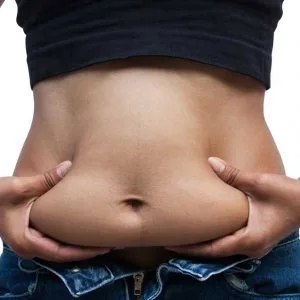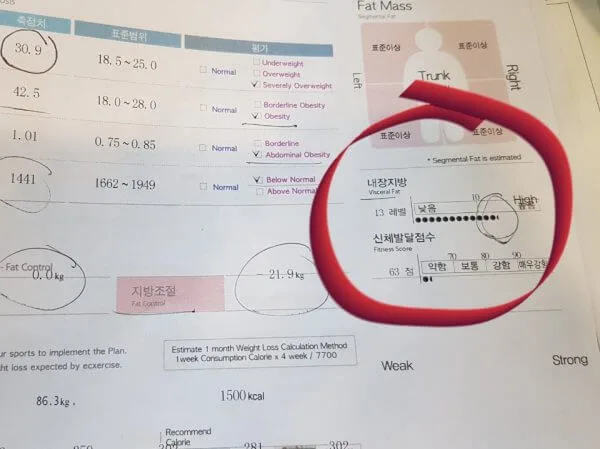Unlocking the Mystery of Visceral Obesity: Why Surgery Isn’t Enough
Visceral obesity, also known as central obesity, is a condition where fat accumulates in the abdominal cavity, surrounding important internal organs such as the liver, pancreas, and intestines. This type of fat is different from subcutaneous fat, which lies just beneath the skin. While subcutaneous fat can be targeted through procedures like liposuction or tummy tuck, visceral fat lies deeper in the body and cannot be removed surgically (SpringerLink).

Why Is Visceral Obesity Dangerous?
Visceral fat isn’t just a passive layer of storage. It’s metabolically active and releases hormones and chemicals that can interfere with your body’s normal functions. High levels of visceral fat are linked to an increased risk of serious health problems, such as:
- Heart Disease: Visceral fat contributes to inflammation and can lead to the buildup of plaque in your arteries, increasing the risk of heart attack and stroke (SpringerLink).
- Type 2 Diabetes: It’s associated with insulin resistance, making it harder for your body to regulate blood sugar levels.
- High Blood Pressure: Excess visceral fat puts more strain on your cardiovascular system, raising blood pressure.
- Fatty Liver Disease: The fat surrounding the liver can lead to its dysfunction and even liver scarring (cirrhosis) over time.
Why Can’t Surgery Remove Visceral Fat?
Procedures like liposuction and tummy tuck are designed to remove subcutaneous fat, which is located just beneath the skin. However, visceral fat is stored deep inside the abdominal cavity, surrounding vital organs, making it inaccessible through surgery. Additionally, some studies suggest that liposuction may lead to a compensatory increase in visceral fat if not paired with regular physical activity (Oxford Academic).
The Role of Liposuction and Tummy Tuck in Addressing Obesity
While it’s true that liposuction or tummy tuck cannot eliminate visceral fat, they can still play an important role for patients struggling with obesity. People with severe visceral obesity often have a low basal metabolic rate and may find it difficult to achieve significant results from diet and exercise alone. In fact, studies suggest that the success rate for weight loss through lifestyle changes is less than 8% for individuals with obesity.
By removing external fat through procedures like liposuction or tummy tuck, patients can experience a dramatic improvement in their appearance, which can serve as a powerful motivation to adopt healthier habits. This renewed sense of motivation often increases the likelihood of overcoming obesity and maintaining long-term weight management.
How Can You Tell If You Have Visceral Obesity?
Unlike subcutaneous fat, visceral fat isn’t visible from the outside. However, a large waistline can be an indicator. For most people, a waist circumference of more than 35 inches (88 cm) for women and 40 inches (102 cm) for men suggests an unhealthy amount of visceral fat. Body mass index (BMI) can also provide a clue, but it doesn’t distinguish between fat types.
The most accurate way to measure visceral fat is through imaging techniques like CT scans or MRI, but these aren’t commonly used due to their cost and complexity. Instead, doctors may assess risk factors like waist-to-hip ratio and overall lifestyle.
What Causes Visceral Obesity?
Several factors contribute to the buildup of visceral fat:
- Unhealthy Diet: High consumption of sugary, processed foods and trans fats.
- Lack of Exercise: Sedentary lifestyles make it harder to burn calories and fat.
- Stress: High stress levels can lead to hormonal imbalances, particularly increased cortisol, which promotes fat storage in the abdominal area.
- Genetics: Some people are predisposed to store fat in the abdominal region.
- Aging: As we age, our metabolism slows down, and hormonal changes can lead to fat redistribution.

How Can You Reduce Visceral Fat?
The good news is that visceral fat responds well to lifestyle changes. Here are some effective strategies:
- Healthy Eating: Focus on a balanced diet rich in fruits, vegetables, lean proteins, whole grains, and healthy fats. Avoid added sugars, refined carbs, and processed foods.
- Regular Exercise: Aim for at least 150 minutes of moderate aerobic activity or 75 minutes of vigorous exercise per week, combined with strength training.
- Stress Management: Practice relaxation techniques such as meditation, yoga, or deep breathing exercises.
- Adequate Sleep: Poor sleep can disrupt hormones that regulate appetite and fat storage. Aim for 7-9 hours of quality sleep each night.
- Limit Alcohol Consumption: Excess alcohol intake can contribute to weight gain, particularly around the abdomen.
Medical Options for Addressing Visceral Obesity
While lifestyle changes are the foundation for reducing visceral fat, additional medical interventions may be necessary for some individuals. Options include:
- Medications and Injections: Prescription medications or injectable treatments like GLP-1 medications have shown effectiveness in reducing visceral adipose tissue (PLOS ONE).
- Behavioral Therapy: Addressing emotional and psychological factors through counseling or therapy can help individuals overcome barriers to weight loss.
- Bariatric Surgery: For those with severe obesity and associated health risks, bariatric surgery, such as gastric bypass or sleeve gastrectomy, may be considered as a last resort to achieve significant weight reduction.

Key Takeaway for Patients Considering Liposuction or Tummy Tuck
While procedures like liposuction and tummy tuck are highly effective for reshaping your body by removing subcutaneous fat, they do not address visceral fat. However, these procedures can still be a meaningful step in overcoming obesity. For patients with low motivation or limited success with traditional weight loss methods, the visible results of surgery can provide the encouragement needed to adopt healthier habits. Combining surgical procedures with sustainable lifestyle changes and, if necessary, medical treatments can lead to both aesthetic improvements and long-term health benefits.

